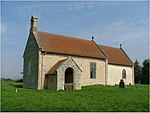Stanford Training Area
Geography of NorfolkMilitary in NorfolkMilitary training areas in the United KingdomSites of Special Scientific Interest in NorfolkTraining establishments of the British Army ... and 1 more
Use British English from September 2019

The Stanford Training Area (STANTA), originally known as the Stanford Battle Area, is a British Army training area situated in the English county of Norfolk. The area is approximately 30,000 acres (120 km2) in size; it is some 7 miles (11 km) north of the town of Thetford and 25 miles (40 km) south-west of the city of Norwich.[1] The site is run by the Mission Ready Training Centre (MRTC).
Excerpt from the Wikipedia article Stanford Training Area (License: CC BY-SA 3.0, Authors, Images).Stanford Training Area
Breckland District Sturston
Geographical coordinates (GPS) Address External links Nearby Places Show on map
Geographical coordinates (GPS)
| Latitude | Longitude |
|---|---|
| N 52.52078 ° | E 0.7548 ° |
Address
Stanford Training Area
IP25 6NB Breckland District, Sturston
England, United Kingdom
Open on Google Maps









